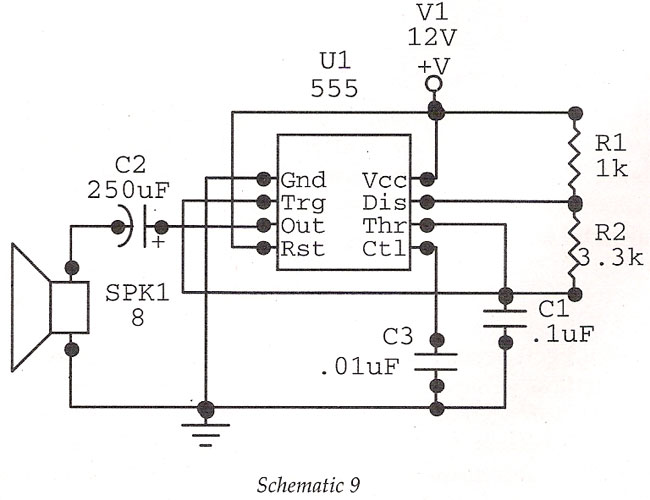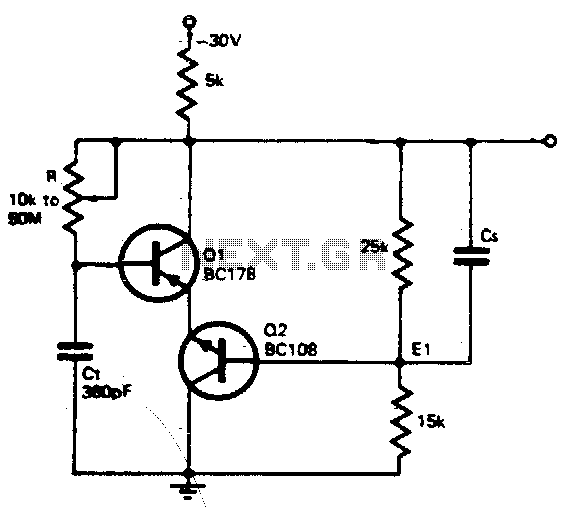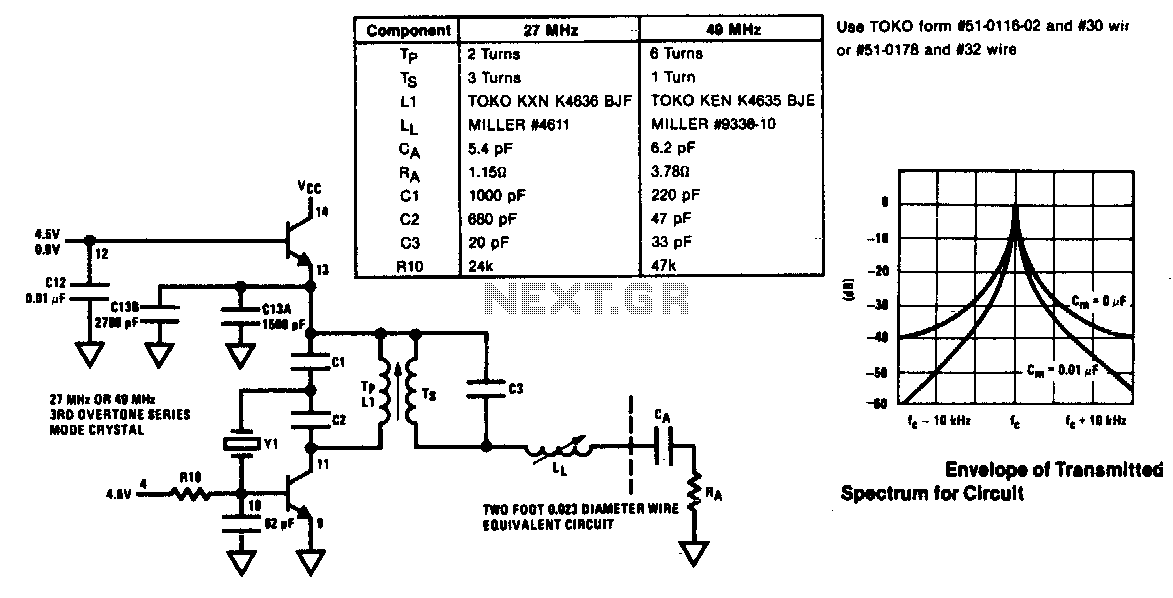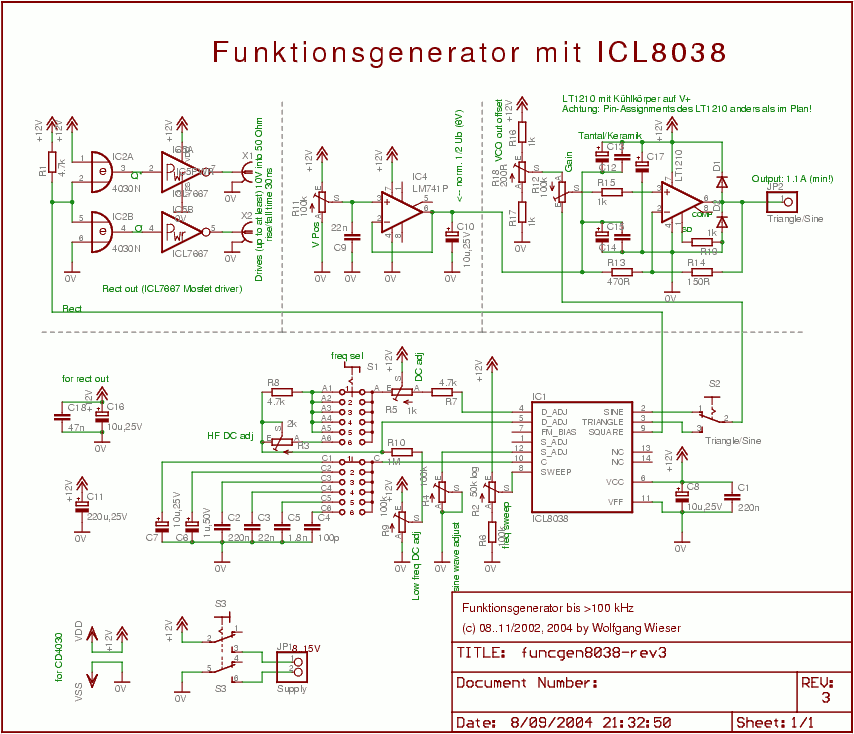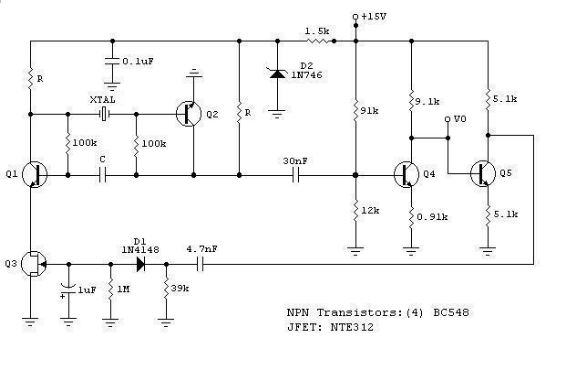
Clapp oscillator
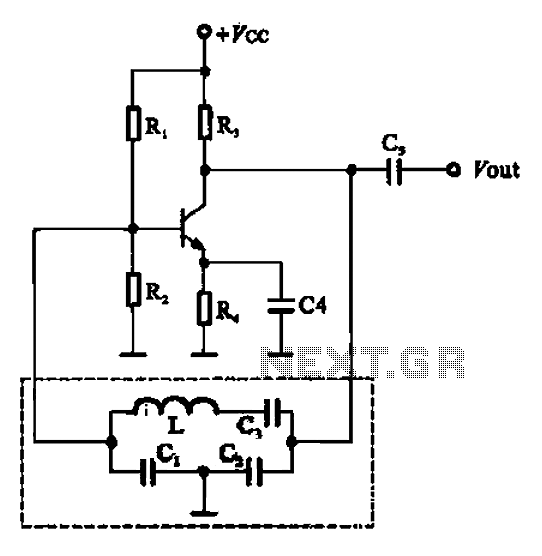
The Colpitts oscillator, based on the deformed oscillator principle, is formed by a Clapp oscillator. The fundamental differences between these oscillators lie in the resonant feedback circuit, which includes an additional capacitor C3 and inductors connected in series. Since C3 is significantly smaller than capacitors C1 and C2, the oscillation frequency is predominantly determined by C3. With C1 and C2 having one end grounded, the transistor junction capacitance and other stray electrical capacitances interact with C2 in parallel, altering their effective values. However, C3 remains unaffected, allowing for the generation of a more accurate and stable oscillation frequency.
The Colpitts oscillator is a type of electronic oscillator that utilizes an inductor and two capacitors to produce oscillations. In this configuration, the oscillator is enhanced by the inclusion of an additional capacitor, C3, which plays a crucial role in determining the frequency of oscillation. The series connection of the inductor with capacitors C1, C2, and C3 creates a resonant circuit that is sensitive to the values of these components.
The unique aspect of this oscillator design is that C3, being much smaller than C1 and C2, allows for a more precise control over the oscillation frequency. The frequency of oscillation can be approximated using the formula:
\[ f = \frac{1}{2\pi\sqrt{L \cdot C_{total}}} \]
where \( C_{total} \) is the effective capacitance seen by the inductor L. In this case, \( C_{total} \) is primarily influenced by C3, as the larger capacitors C1 and C2 have their effective values modified by stray capacitances and the transistor junction capacitance.
The grounding of one end of C1 and C2 introduces additional capacitance effects, which can lead to variations in the expected oscillation frequency. These effects are often minimized in circuit design to ensure stability and reliability. The stability of the oscillation frequency is crucial in applications such as signal generation, frequency synthesis, and in RF circuits.
In summary, the Colpitts oscillator with the additional capacitor C3 demonstrates a refined approach to frequency control, leveraging the properties of capacitive and inductive components to achieve a stable and precise oscillation output. This design is particularly useful in applications requiring high-frequency stability and accuracy. As shown in the Colpitts oscillator based on the deformed oscillator basis is formed by an oscillator Clapp, Colpitts oscillator with the fundamental differences between the re sonant feedback circuit has an additional capacitor C3 and inductors It is connected in series. Because C3 is much smaller than cl and C2, the oscillation frequency is almost entirely determined by C3. Because cl and cz has one end grounded, the transistor junction capacitance and other stray electrical capacitance will and C.
And end with respect to the formation of C2 in parallel, so that their actual value has changed changed, however C3 will not be affected, so you can produce a more accurate and stable oscillation frequency oscillation.
The Colpitts oscillator is a type of electronic oscillator that utilizes an inductor and two capacitors to produce oscillations. In this configuration, the oscillator is enhanced by the inclusion of an additional capacitor, C3, which plays a crucial role in determining the frequency of oscillation. The series connection of the inductor with capacitors C1, C2, and C3 creates a resonant circuit that is sensitive to the values of these components.
The unique aspect of this oscillator design is that C3, being much smaller than C1 and C2, allows for a more precise control over the oscillation frequency. The frequency of oscillation can be approximated using the formula:
\[ f = \frac{1}{2\pi\sqrt{L \cdot C_{total}}} \]
where \( C_{total} \) is the effective capacitance seen by the inductor L. In this case, \( C_{total} \) is primarily influenced by C3, as the larger capacitors C1 and C2 have their effective values modified by stray capacitances and the transistor junction capacitance.
The grounding of one end of C1 and C2 introduces additional capacitance effects, which can lead to variations in the expected oscillation frequency. These effects are often minimized in circuit design to ensure stability and reliability. The stability of the oscillation frequency is crucial in applications such as signal generation, frequency synthesis, and in RF circuits.
In summary, the Colpitts oscillator with the additional capacitor C3 demonstrates a refined approach to frequency control, leveraging the properties of capacitive and inductive components to achieve a stable and precise oscillation output. This design is particularly useful in applications requiring high-frequency stability and accuracy. As shown in the Colpitts oscillator based on the deformed oscillator basis is formed by an oscillator Clapp, Colpitts oscillator with the fundamental differences between the re sonant feedback circuit has an additional capacitor C3 and inductors It is connected in series. Because C3 is much smaller than cl and C2, the oscillation frequency is almost entirely determined by C3. Because cl and cz has one end grounded, the transistor junction capacitance and other stray electrical capacitance will and C.
And end with respect to the formation of C2 in parallel, so that their actual value has changed changed, however C3 will not be affected, so you can produce a more accurate and stable oscillation frequency oscillation.
